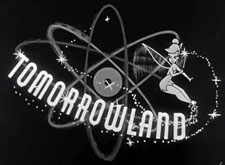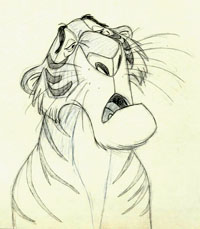 Brad Bird’s Perspective. “I think all movies are an illusion, whether they are live action or animation,” said animation director Brad Bird in 2007. “And I think the best special effect that people don’t pay enough attention to is caring about the characters who are going through the set pieces. If you can be invested in the characters that you’re putting in danger, then you can amp up the pressure, and it really means something because people are rooting for them to survive. Characters are the special effect.
Brad Bird’s Perspective. “I think all movies are an illusion, whether they are live action or animation,” said animation director Brad Bird in 2007. “And I think the best special effect that people don’t pay enough attention to is caring about the characters who are going through the set pieces. If you can be invested in the characters that you’re putting in danger, then you can amp up the pressure, and it really means something because people are rooting for them to survive. Characters are the special effect.
“My favorite filmmakers are versatile guys like Howard Hawks, who could do screwball comedy one second and a Western the next and then a hard-edged Bogart movie after. They just liked film, and they liked storytelling. I want to be able to do a lot of different kinds of things, too.”
Ralph Bakshi on Wizards (1977). Here is an excerpt from an interview I did with Ralph Bakshi in 1978 as the basis for an article in The Comics Journal. He was just weeks away from releasing his animated feature The Lord of the Rings (1978): “Wizards was a comic book for a young audience. It was sword and sorcery for kids. People accused the film of shortcutting but I really loved it. I felt Mike Ploog’s drawings in the beginning were terrific. It was like comic books. I love comic books. I loved that sequence. We also used the rotoscope in Wizards but we didn’t have time to put in the detail. I swear I didn’t have The Lord of the Rings in mind when I was doing Wizards.”
In 2004, Bakshi announced he was going to produce an original graphic novel called Wizards II. Each story would be done by a different artist but all the stories would be a part of the Wizards universe, including ideas that Bakshi had for a (still-possible) sequel.

Michener on Milt. Disney Legend Milt Kahl passed away at the age of 78 in April 1987. In May, animator Dave Michener, who was Milt’s assistant beginning with “The Jungle Book” (1967), wrote a tribute in the May 1987 issue of The Peg-Board: “Milt was a no b.s., straight-from-the shoulder artist who said what he thought. He worked with an intensity that I have never seen since. Most people don’t realize, because his drawing is so beautiful, that drawing did not come easily to him.
 “It’s hard to believe when you look at his stuff, but nonetheless true. I remember a time on “The Jungle Book” (1967). Milt was crumpling paper for hours, and finally he came into my room for a break.
“It’s hard to believe when you look at his stuff, but nonetheless true. I remember a time on “The Jungle Book” (1967). Milt was crumpling paper for hours, and finally he came into my room for a break.
“We were having coffee and I said, ‘What’s the problem?’ Milt said, ‘Aw, this damn scene. I’ve painted myself into a corner. I’ll tell you something, Dave, something you don’t want to forget.
“Never pick the simple way to do a scene. Pick the hardest way then that’s the way you do it. But I am having a bitch of a time with these drawings’. I laughed and said, ‘Well, if you can’t draw it, nobody can’. Milt said, ‘Aw, hell, I’ll get it’. And he did.”
Jesse Marsh. Some animation fans may just know artist Jesse Marsh as the Dell comic book artist who was the primary artist on the character of Tarzan before Russ Manning took over. Marsh was working as an artist at the Disney Studio when he first did some work on the side for Western Printing in 1945 and then left Disney entirely in 1947 to work for that company full time.
 He was originally hired at Disney in 1939 at the age of thirty-two. He was a self-taught artist unlike many of his peers. He worked as a storyman on Pinocchio (1940) and Fantasia (1940). Then in 1942, he went into the Army Air Force as a radar man.
He was originally hired at Disney in 1939 at the age of thirty-two. He was a self-taught artist unlike many of his peers. He worked as a storyman on Pinocchio (1940) and Fantasia (1940). Then in 1942, he went into the Army Air Force as a radar man.
Returning to the Disney Studio after the war, he was a storyboard artist on Pluto shorts (Canine Casanova 1945, Pluto’s Kid Brother 1946, In Dutch 1946), a Donald Duck short (Lighthouse Keeping 1946) and also worked on Johnny Appleseed and Little Toot. In addition, he headed up the second doomed effort to create a feature film based on Don Quixote.
Legend Marc Davis remembered, “He used to decorate the doors of our studios with huge color nudes drawn on wrapping paper. He was very good.”
Insight from Matt Groening. “I think you can make people laugh in spite of themselves,” said cartoonist Matt Groening in 2007. “People weren’t used to The Simpsons when it first came on the air. At the time, animation was known as children’s entertainment. We defined ourselves as entertainment for adults and did a lot of stuff you couldn’t do on Saturday morning.”
David Hilberman. David Hilberman passed away in July 2007 at the age of 95. He is remembered for being one of the founders of UPA Studio. Animator and director Bill Melendez, best known for directing the Peanuts television specials, recalled in a 1986 interview, “Dave was a solid bear of a guy. He was like a bricklayer, and that was the way he operated the studio: He built it solid, and every film he did was solidly made. Dave was a great filmmaker and teacher—so calm. We were all young and kind of scatterbrained and didn’t know what to do. Dave was always oil on troubled waters. I can still hear him: ‘Let’s think about it. Let’s discuss it. This is what it is. This is what it isn’t’.”
 Thanks to the testimony of Walt Disney in 1947 for the House on Un-American Activities Committee on his belief that Hilberman was a communist who instigated the 1941 Disney Studio strike, Hilberman was blacklisted and it forced the closure of Tempo Productions, one of the top New York commercial studios that he helped found.
Thanks to the testimony of Walt Disney in 1947 for the House on Un-American Activities Committee on his belief that Hilberman was a communist who instigated the 1941 Disney Studio strike, Hilberman was blacklisted and it forced the closure of Tempo Productions, one of the top New York commercial studios that he helped found.
In 1979, Hilberman told animation historian John Canemaker, “Up to the war, for about three years, I was a communist. Once the war came along, everybody plunged into the war effort. Everybody’s on the same side. The strike itself was not communist-led. I was floored when some obviously communist-inspired material was put up on the bulletin board.”
Hilberman continued to do freelance animation in England, France and the U.S. In 1965, he earned his master’s degree in theater arts at UCLA. He taught film at San Francisco State from 1967 to 1973.


 Jim Korkis is an internationally respected animation historian who in recent years has devoted his attention to the many worlds of Disney. He was a columnist for a variety of animation magazines. With his former writing partner, John Cawley, he authored several animation related books including The Encyclopedia of Cartoon Superstars, How to Create Animation, Cartoon Confidential and Get Animated’s Animation Art Buyer’s Guide. He taught animation classes at the Disney Institute in Florida as well as instructing classes on acting and animation history for Disney Feature Animation: Florida.
Jim Korkis is an internationally respected animation historian who in recent years has devoted his attention to the many worlds of Disney. He was a columnist for a variety of animation magazines. With his former writing partner, John Cawley, he authored several animation related books including The Encyclopedia of Cartoon Superstars, How to Create Animation, Cartoon Confidential and Get Animated’s Animation Art Buyer’s Guide. He taught animation classes at the Disney Institute in Florida as well as instructing classes on acting and animation history for Disney Feature Animation: Florida.




















































I briefly knew Dave Hilberman when he was picking up scenes of H-B’s first season of SMURFS to draw layouts. He was a quiet fellow who, even at the nadir of his illustrious career, did top-notch work.
The drawings at the start of Wizards are good, but it would have been better storytelling to find a way to reveal the backstory as the film unfolds, rather than lump it all at the beginning,
Yeah, some of us like a little “Show, Don’t Tell” in our stories. The element of observation is also very engaging too if you know how to use it correctly.
Thanks for mentioning Jesse Marsh. Dark Horse needs to finish their Marsh Tarzan series of hardcover reprints. They are beautiful books. A great installment as always, Jim Korkis.
Sergio Aragonés is a huge fan of Jease Marsh’s TARZAN. He didn’t know Jesse’s name (until I told him) but he said he loves the cartoonist who drew “the Tarzan with the squinty eyes.”
Milt Kahl definitely knew his stuff about animating. But I could never recommend looking for the hardest way to do something, I always advise doing it the easiest way unless you think there is a better way to get the scene across.